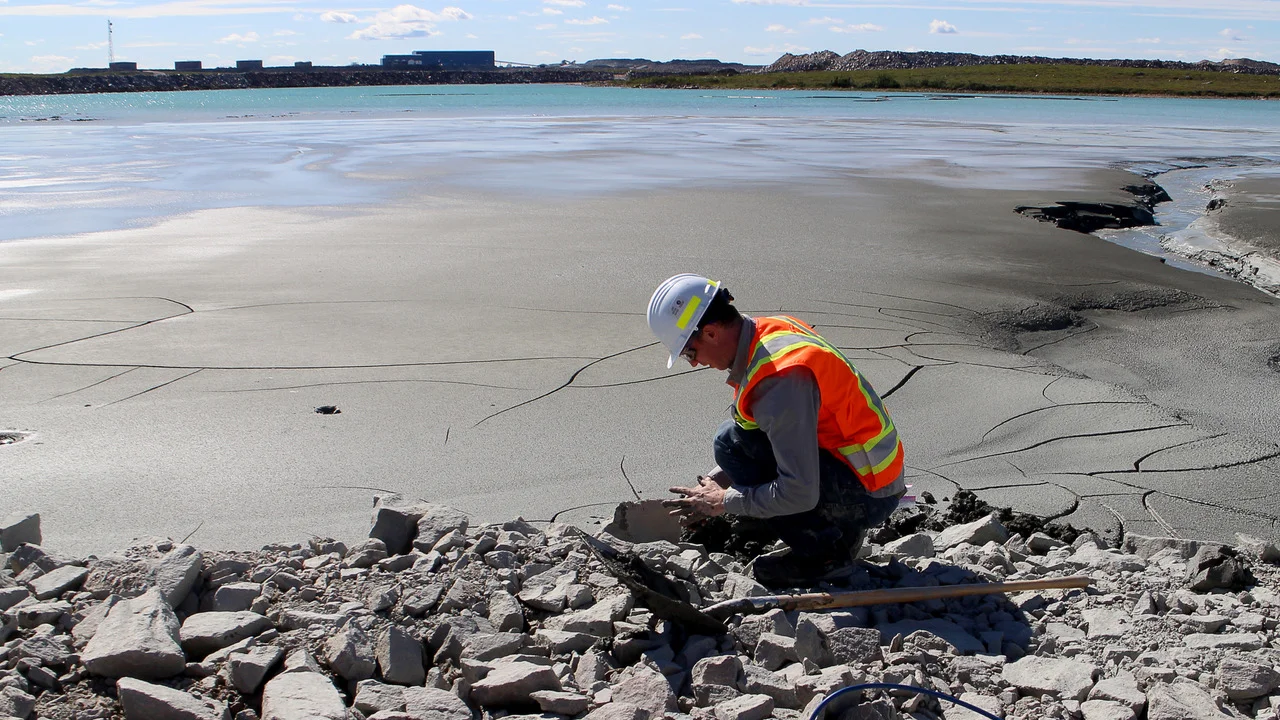Duncan (M.Sc. student) has setup some cool column experiments to determine rates of CO2 sequestration through enhanced rock weathering of pulverized kimberlite, wollastonite skarn, and dunite. He is tracking changes to the solid, aqueous, and gaseous phases as he artificially weathers these rocks in the laboratory. The second phase will see these columns moved to an outdoor space on Trent’s campus to monitor weathering rates under real-world conditions.
Congratulations Amanda!
Congratulations to Amanda Stubbs for successfully defending her Master’s thesis on weathering and carbonation of kimberlite residues from South African diamond mines. Amanda began working in the lab in 2018, completed field campaigns at the Venetia and Cullinan diamond mines, and carried out fantastic experiments for simulating weathering and directly measuring the drawdown of CO2 into mine wastes. She is the first student to complete a graduate degree in the PowerGeolab and her research will significantly contribute to the field of carbon dioxide removal through weathering and carbonation of ultramafic rock! Well done Amanda, we’re all very proud!
Amanda at the Cullinan Diamond Mine posing with her new best friend while sampling cemented and weathered mine wastes!
D2 Phaser X-ray diffractometer
Last week our Bruker D2 Phaser X-ray diffractometer arrived and was installed. This benchtop XRD will enable our lab to routinely analyze rock, sediment, and tailings samples from the field and experiments. We can prep using the micronizer and run samples for both qualitative and quantitative mineralogical analyses. And we have a variety of sample mounts. Looking forward to getting lots of fun and exciting data!
Bruker D2 Phaser X-ray Diffractometer
Back from the shutdown
We have been back in the lab after some time off during the shutdown caused by the COVID-19 pandemic. Like any work place, we’re adapting to a new normal and taking precautions to prevent the spread. Keeping people safe by wearing masks, physical distancing, and additional cleaning. We’re fortunate that Peterborough has not had too many cases (total of 95 as of Jul. 19) and it has been about three weeks since there was a new case, all previous cases have been resolved now. These are strange times, but we’re glad to be doing science, experiments, analyses, which has been really enjoyable!
Big experiments!
Carlos, Amanda, and I travelled to Johannesburg to setup pilot experiments that we’ll use to understand kimberlite weathering and carbonation. We’re using a variety of tools to measure changes in the waters, solids, and gases. These pilots will continue for at least six months, providing us with valuable information that will enable mining companies to use their mineral wastes to sequester carbon dioxide.
Axe throwing to celebrate the holidays!
PowerGeolab and axe throwing champion, Carlos!
The whole lab went out for axe throwing! Somehow Carlos managed to beat Ian and then go on to take the championship! We played a round robin, learnt some trick throws, and then the tournament when Ian choked and Carlos was victorious!
De Beers Workshop in Calgary
Sampling at the Venetia Diamond Mine in South Africa.
Ian attended a workshop at De Beers to present the group’s research on enhanced weathering and carbonation of kimberlite residues. The work was well received and the team is looking forward to a productive 2020 when we’ll launch field trials to better quantify the rates of weathering and carbonation and further develop our carbon verification protocols.
International Institute for Environmental Studies meeting in Seoul, South Korea
Amanda presented her Masters research at the 3rd International Institute for Environmental Studies (IIES) Graduate Students Forum and the 5th annual IIES Science and Policy Workshop at Korea University from November 10-14. Graduate students and faculty from different institutions around the world gathered to discuss important environmental issues from remediation, waste and water management, policy, to environmental effects.
Goldschmidt in Barcelona!
I’m grateful to be here in Barcelona attending Goldschmidt 2019, the top geochemistry conference and an all around great place to hear about geoscience and meet with colleagues from around the world. Barcelona is an amazing city, rich with culture, art, food, and now lots of geochemistry this week. I’m presenting our group’s work on Enhanced Weathering and CO2 mineralization of Kimberlite Mine Wastes in the session on The Role of Mine and Industrial Wastes in the Growing Demand of Mineral Resources. I’m looking forward to a stimulating session, learning from great folks in our field. I’ve already been to the natural history museum that covered most of the basics :)
Research on Mine Waste to Help Industry Become Carbon Neutral
Ian collects mine tailings from the De Beers’ Gahcho Kué Diamond Mine in the Northwest Territories.
New funding from Natural Resources Canada will support application of Trent University research using mine tailings to capture CO2
Trent University is leading research on methods for directly capturing carbon dioxide from the atmosphere into mine tailings, which will help mining operations offset their greenhouse gas emissions.
Today, Natural Resources Canada (NRCan) announced $2 million through its Clean Growth Program for an initiative that will apply research by Dr. Ian Power, Canada Research Chair in Environmental Geoscience and assistant professor in the Trent School of the Environment. Professor Power is investigating how waste from mining operations can be used to capture and store carbon dioxide. (article continues)










